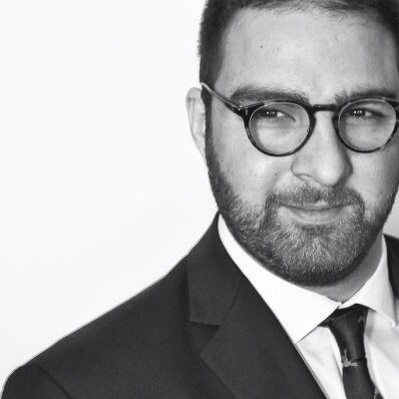D Co. Ulrich
Dirty & Rowdy
Unfamiliar Mourvedre 2017
Via Brooklyn Wine Exchange: Hardy Wallace is a bit of a superstar in the "New California" wine scene. He began his wine career in Atlanta, publishing a blog on the subject called Dirty South Wines. In 2009, he won a high-profile contest held by Murphy-Goode Winery in Sonoma, called "A Really Goode Job." Hardy beat out 2,000 other applicants for this stunt-job, acting as a sort of social media/pr coordinator for the winery. Upon completion of his six-month contract, he went to work for several legendary winemakers in the valley, including Cathy Corison (Chappellet, Corison) and Ehren Jordan (Turley, Failla). During this time, Hardy and his wife Kate also partnered with friends Matt and Amy Richardson to form a small label called Dirty & Rowdy Family Winery. For their first vintage, they purchased one ton of Mourvredre, the semi-obscure Provencal and Spanish variety that is rarely seen outside the context of a red blend in California.
Knowing that Dirty & Rowdy could distinguish itself in a ocean of Napa Valley Cabernet Sauvigon with this curious and brawny grape, Hardy & Co. quickly bet the farm on Mourvedre, as a vehicle to express different styles of winemaking as well as the terroir of multiple regions within California. Flash-forward to current day, where Dirty & Rowdy has become the king of California Mourvedre, bottling multiple cuvees each year that sell out almost immediately.
Dirty & Rowdy is a well-known emblem of the domestic natural wine scene as well. Hardy buys almost exclusively from organic growers, and doesn't filter, acidify, or alter his wines in anyway. Sulfur use is extremely low, and the overall philosophy is to be as hands-off as possible.
That is until 2017. The fact that Dirty & Rowdy has a wine to present at all for this vintage is a miracle. Flashback to mid-July last year. The growing season wasn't going all that well. Tremendous heat spikes created growth problems at almost all the vineyards Hardy sources grapes from. It's hard enough to monitor vine issues on one vineyard, let alone almost a dozen parcles scattered around six counties stretching from the Central Coast all the way out to the Sierra Foothills. A case of shingles went from bad to worse, spreading to his eyes. Hardy completely lost his vision for three days. Kate's brother Angus, a ski instructor and artist from Aspen, drove out to lend a hand with the impending harvest. On his way out, he was involved in single-car crash along a treacherous stretch of interstate and tragically lost his life.
Then the fires started.
Hardy and Kate, like many other producers who make wines in communal "crush" facilities located in urban areas around Sonoma and Napa, had hoped to ride out the fires and continue their wine production. The fires spread rapidly and threatened both their house and their winery, located in Petaluma. They left their wine in the midst of alcoholic fermentation, one of the most crucial and stressful times of the year for a winemaker even in the best of situations. When they were able to return eight days later, the winery was luckily undamaged. The wine, however, didn't fare so well. most vats had experienced "stuck fermentation," meaning that the native yeast died before eating all the sugar. Hardy, like most forward-thinking American winemakers, is a firm believer in natural fermentation. This no-brainer aspect to his wine was now an virtual impossibility. Plus, the vats contained high levels of volatile acidity or "VA," which creates an unfavorable "nail polish" quality in wine. A little bit of VA can give lift and energy to wine. Too much, however, renders the wine undrinkable.
At this point, Hardy thought to sell all the wine off in bulk for pennies on the dollar. Or perhaps create a second label to distance himself from what was surely going to be an atypical wine. Instead, he decided to combine almost every vat of his Mourvedre for the vintage (including lots of his most expensive fruit), and go into the "Unfamliar" territory of interventionist winemaker. Stuck lots were restarted using a variety of methods. When the wines finally fermented to dryness, he borrowed a "reverse osmosis" filtration system, perhaps the most modern of all the modern wine doohickeys. This contraption allowed Hardy to literally suck out the volatile acidity to bring it down to a pleasing level, as well as moderate and stabilize the alcohol. Then he filtered the wine. Basically, he did all the things he never thought he would ever want to do to wine.
The resulting wine is something that we have never seen before, both from Dirty & Rowdy and the Mourvedre grape, in general. Much of the wine fermented carbonically in tank, so the expression is much closer in style to Beaujolais than Bandol. It is so light on its feet, in fact, that Hardy believes this wine could take a serious chill. (Hence the reason we are trying to get you to try a California Mourvedre in the middle of a sweltering summer!) The tannins are pretty much non-existent, and the fruit is pretty and pure. There is a lovely little purple flower note in the middle of the wine, and a hint of smokiness on the finish (smoke taint from the fires? Or is this just some sort of phantom association because of the context? Either way, it adds depth and personality to this gorgeous wine.)
Since their "Annus Horribilis" of 2017, order and peace has been restored in Hardy & Kate's life. Their daughter Maple turns two in a few days. They celebrated the free-spirited life of their brother with scores of his friends and ski students at Aspen Mountain's opening day last November. The motto of the celebration, "Live Like Angus," has inspired hundreds and hundreds of beautiful social media posts. And this year's Spring release of Dirty & Rowdy wines from earlier vintages has quickly sold out around the country, gobbled up by ravenous collectors, restaurants, and retailers (like this one.)
But to Hardy, this "Unfamiliar" wine, which doesn't fit stylistically or financially into the rest of the D&R portfolio, will always represent something completely different: The best of a unthinkably bad situation. "It took a lot of blood, sweat, and tears to get that wine into bottle," Hardy wrote to us, just this morning. "Fortunately, it is fresh, delicious, soulful and somewhat of a Phoenix Rising from 2017. Though it is our least expensive wine ever, it is the wine I am most proud of." — 7 years ago
D co. Ulrich
Amaro
Like super awesome Frenet! — 8 years ago
Domaine Leroy
Bourgogne Pinot Noir 2015
On the nose, nicely concentrated wild dark berries, black plum, notes of blue fruits, vanilla, understated cinnamon, soft, warm spices, Christmas cake and fresh dark, fragrant florals. The mouthfeel is rich & concentrated. The fruits dark are clearly fresh & ripe. Wild dark berries, black plum, plum, dark cherries, poached strawberries, black raspberries, Thompson raisins, light vanilla, soft warm spices, limestone minerals, grainy/silky chalkiness, dark moist soils, crushed rocks, violets, fresh dark florals, touch of mint, beautiful round acidity and amazing long rich beautiful finish that is well balanced fruit & earth. This is a vintage (even though Bourgogne) will cellar around 20 years. My rating could jump 2-3 points with proper storage years in the cellar. It's tasting more like 1st Cru than village wine. Photo tour of the estate, open top fermenters (I believe they ferment all their lots separately) and Lalou Bize-Leroy singing and talking to her precious vines. Producer history and notes...Domaine Leroy is arguably producing the greatest red Burgundy wines in the Cote d`Or at present. Lalou Bize-Leroy started out as a négociant, working for her family's Maison Leroy, which was founded by her father Henri. There are three parts to the Leroy empire; the Maison Leroy based in Auxey-Duresses, Domaine d’Auvenay and substantial holdings in Vosne-Romanée. Lalou Bize-Leroy also owns 25% of Domaine de la Romanée-Conti, where she was co-director until the other shareholders ousted her in 1992, partly because she had started a competing winery. Domaine Leroy has been farmed biodynamically from the start and is now certified by ECOCERT. The other exciting, if not controversial, move was the change in training system for the vines. For some time previously the hedging (rognage) of the vineyards had been done by hand rather than more abrasively by machine. However, it is not natural for the vine to be cut back as it affects the vine’s performance both in the current season and the following year. So now, after the flowering, when the shoots are lengthening, they are curled over instead of being cut back. This minimises entrecoeurs and second crop bunches forming, as well as leaving the vine happier and healthier. She also talks and sings to her vines daily. She believes this promotes health of the vines and who could argue with her given what she puts in the bottle. Lalou Bize-Leroy has 23 hectares of vines, mostly Premier and Grand Cru classified. In the vineyard, Lalou practices biodynamism as well as severe pruning and crop-thinning. The result is ridiculously low yields. Yield arguments at DRC were also an issue in her departure. You want to buy this wine. $39.99 at K&L Wine Merchants on pre-arrival. Just bought four bottles.
— 8 years ago
Hokusetsu Shuzo Co.
Nobu YK35 Yamadanishiki Junmai Daiginjo Sake
Chuy d
Gemelos — 6 years ago
Cluster Wine Co.
Dark Cluster Washington State Red Blend 2015
$9.99 at D&W. Juicy and full. Lots of sweet berry and a mildly dry finish. Great value for the price. — 6 years ago
Heidsieck & Co.
Monopole Gold Top Brut Champagne Blend 2009
Won it at a church fair. :D Beast $10 bucks ever spent. — 8 years ago
Cartograph
Russian River Valley Pinot Noir
With D and Lauren at home in CO — 8 years ago
Bodega Fundada
Albariño D' Fefinanes Albariño 2015
Nice Albariño. Citrus and florals present. Great summer supper. Purchased at Keif & Co in NOLA — 8 years ago









Erin Merchant
You don’t get to tell me how Tenacious D my wine should be. — 4 years ago